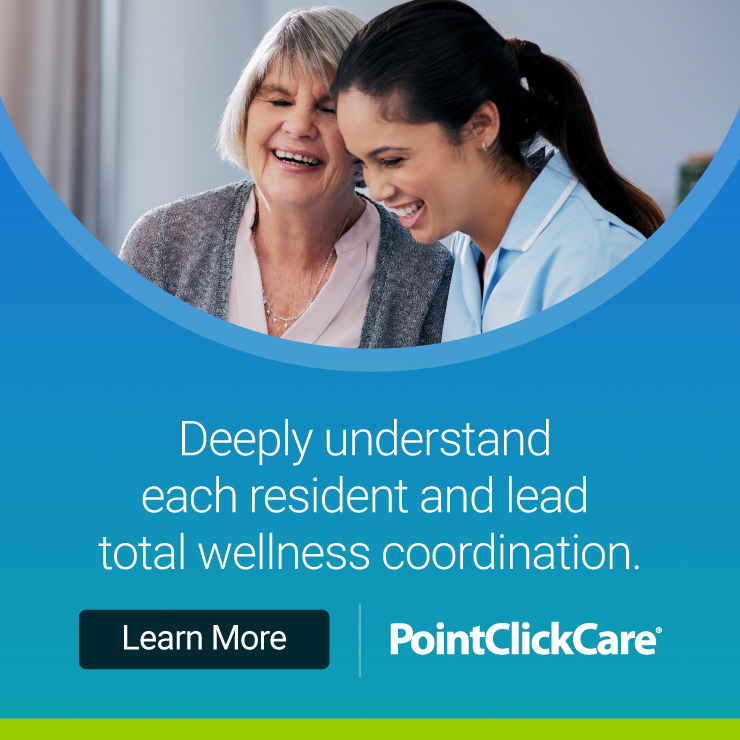3 things senior living operators need to be doing in terms of nutrition and health to make their communities healthier.
By Susan Saldibar
It always seems like innovative ideas come from entrepreneurial millennials or start-up companies. So when I spoke recently with Merijane McTalley, owner of 35-year-old Nutricopia (a Senior Housing Forum partner), I was pleasantly surprised. Turns out she is all about exploring new ideas and having the flexibility to do things differently. For an organization that’s been around this long, that’s a breath of fresh air, especially in an industry that isn’t exactly known for forward thinking.
For starters, Merijane is not one to be content with the status quo. One of the first questions she asked me was, “Why aren’t we more focused on getting people better?” That’s a great question. When you get people better, it’s better for residents and better for business, keeping them in your communities longer.
Nutricopia has been considered California’s number one nutrition consultant for years. They do just about everything from customized menus to customized training and support. They are also working with the government to put healthy nutrition at the center of more senior living programs. Right now, in fact, they are working with the CDC on a special pilot program. That’s in addition to their ongoing work on the International Dietary Dysphagia Initiative (IDDSI). This is interesting and important work, deserving of its own article! They have even done work with NASA and astronauts.
I asked Merijane to share with us, from her vantage point, what senior living operators need to be doing in terms of nutrition and health to make both their communities and their bottom lines healthier. Here are three points she made that jumped out at me.
-
Make sure you are doing everything you can to get your residents eating again.
Obvious? Maybe not. Because, according to Merijane, this takes more investigative work than some are willing to do. “At Nutricopia we don’t look at just one thing. We conduct a true root cause analysis,” Merijane tells me. “That means you don’t just say ‘this is the problem or that’s the problem’. You dig deep to find out why it’s a problem.”
Everything from bad teeth to missing teeth to medications to other health issues is looked at. Doing a root cause analysis means digging deeper for answers, Merijane explains. “For example, your dietitian should be saying, ‘I see that you take your meat out of your mouth after you chew it. Do your teeth hurt, is it too tough for you? Shall we grind it up a bit?’ In other words, the dietitian needs to pull more information from them other than, ‘I’m not hungry,’” Merijane says.
-
Invest in training for your team. They’ll be better for it and so will your community.
Nutricopia is very big on education and training for their own nutrition team. They run an online CDM program for the community’s employees which they also offer to clients. “It’s required by CMS,” Merijane tells me. “But wouldn’t it be great if assisted living had certification for that as well?”
The benefit of having all your employees trained and certified is compelling. First, there is a reduction of risk. Merijane recounted the story of a dishwasher who had no idea what she was supposed to do, except that “soapy water first, rinse second, third . . . well, just needs to be pink.” She apparently knew nothing about using a test strip to check the sanitation of the water. “She worked there for over two weeks and didn’t know the basics,” says Merijane. “She deserves better. So does the community.”
Training also makes people feel better about themselves. They know the community has invested in them and it increases their sense of worth. “It makes people less likely to change jobs when they feel more empowered to make decisions on their own,” Merijane says. -
Encourage innovation and new ideas.
When you encourage input from the entire team everyone feels connected. “We are always looking at new things; always making positive changes,” says Merijane. “We train. We conduct conferences. We look at things in new ways.” she adds. And that’s what she encourages in the communities she works with.
Of course, it starts with the food itself. She encourages communities to use their staff and residents to pump up their menus. “Talk to residents. Do some taste testing,” she says. “Have them ‘yay or nay’ each recipe.” And some great new dishes come out of that taste testing and recipe sharing. “But these things can only happen if you are flexible in the way you approach your menus and dining experience,” Merijane says.
For Merijane, that flexible thinking comes from years ago, being told things like, “But Merijane, we’ve never done it that way!” No longer so. “We need to be more progressive,” she says. “Even though I’m older. I instill this in my staff. ‘Bring me a good idea! Look outside the box! There’s always a better way of doing things!’” Don’t we need more of that?
For more information about Nutricopia, please visit their website:
Click on the button below to download a PDF copy of this article:









